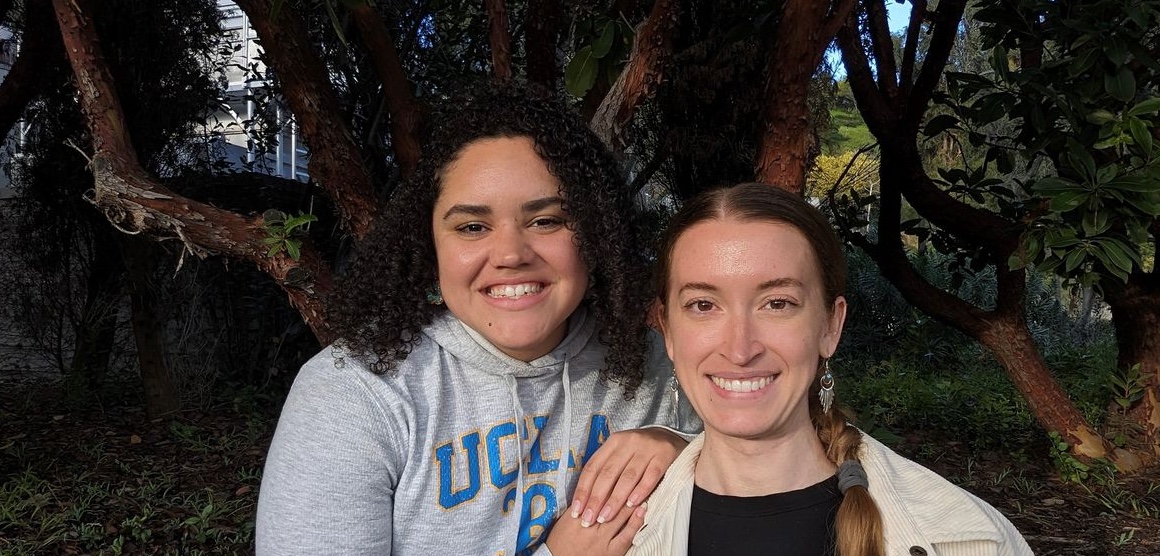Mellon Foundation invests $1 million in transformative UCLA cultural conservation program

By Jonathan Riggs
The crucial work of conserving archaeological and cultural heritage materials allows us to connect and sometimes even reconstruct the past. But too often, the field has not made room for more diverse perspectives and practitioners who may have closer ties than their white peers to the heritage being studied.
For almost a decade now, UCLA’s Andrew W. Mellon Opportunity for Diversity in Conservation — administered via the UCLA/Getty Conservation Program at the Cotsen Institute of Archaeology in the division of social sciences — has been increasing diversity in the field and providing invaluable experience for promising, rising conservators of color — and COVID wasn’t about to stop their momentum.
“During the pandemic, they basically sent us each our own conservation lab in a USPS box,” said Makayla Rawlins, who turned her family’s garage into a workspace to complete all the assignments, whether it was photographing artifacts or reconstructing shattered pottery. “Everyone was so inviting and creative as we were figuring all this out together that it really nurtured me to be ready to move forward in every way.”
Rawlins, a descendant of the Luiseño tribe who grew up in Hemet, California, was always fascinated by art but thought she would pursue chemistry professionally. That is, until she realized that a career in conservation would allow her to draw from both art and science.
For Cheyenne Caraway, a citizen of the Choctaw Nation of Oklahoma and descendant of the Chickasaw tribe who grew up in Durant, Oklahoma, a path to the program opened while she was an undergraduate at Fort Lewis College in Colorado. Inspired by Jeanne Brako, a curator on campus, Caraway went on to work in museums herself when she met Ellen Pearlstein, a UCLA professor of information studies and the UCLA/Getty Program in the Conservation of Cultural Heritage, and principal investigator for the Mellon initiative.
“She was doing outreach at Fort Lewis for the pilot program, and it inspired me so much that I decided to take a leap of faith,” Caraway said. “I even visited UCLA to learn more about the program, and I just fell in love with how interdisciplinary it was — I knew that was the kind of education I wanted to get.”
“The Mellon opportunity removes obstacles for underrepresented students to prepare for graduate conservation education,” Pearlstein said. “Students like Makayla and Cheyenne add a multiplicity of voices and directions for the work that we do. They and their peers want to contribute to working with their own cultural heritage and their own communities, and enabling that enriches all of us.”
Among the first group of program participants to be accepted into graduate school, Rawlins and Caraway are currently second-year UCLA conservation master’s students, crediting their participation in the Mellon program not only for giving them an entry point to a highly competitive field, but for opening doors to other creative, enriching experiences.
For example, Rawlins completed an internship at the Academy Museum of Motion Pictures, where she worked with famous film costumes and even pieced a plaster life cast of Al Pacino back together. Caraway completed a formative internship at the National Museum of the American Indian and has lined up additional appointments at the Alaska State Museum in Juneau and the Michael C. Carlos Museum in Atlanta.
“Honestly, this has been such an amazing journey — getting to go to UCLA always seemed to me like this golden opportunity I never thought I’d be able to reach,” Rawlins said. “And now to be in a position where I and my classmates are making an impact on the conservation field for the better? I’m just so excited and grateful.”
“Within my cohort alone, you have three Indigenous individuals and some incredible allies. It’s remarkable being part of this next generation of conservators who not only are talking about changing the field, but are actually doing it,” Caraway said. “Programs like this Mellon opportunity make a difference for individuals, for communities and for us all, and I feel like I’m living proof.”
Initially funded for $450,000 in 2016 and enhanced by $900,000 in 2019 by the Mellon Foundation, the program has been such a success that it was recently awarded another grant from the foundation for $1 million.
Its ultimate impact and legacy, however, remain in the students it empowers — like Rawlins and Caraway, who feel the full, future-facing weight of what it means for them to be in the uniquely powerful position of preserving the past.
“I never take for granted how special it is for me to handle and interact with cultural heritage and ancestral materials, particularly my own. Not everyone gets that privilege,” Rawlins said. “I am honored to get to learn about these materials, to handle them, and to pour my spirit into the care and restoration of them.”
“As I’ve grown into my position as a conservator, my family has been so appreciative of the work I do. I’m hoping to be a representative for them, and also for my tribe, in any way I can,” Caraway said. “Conservation is a physical, emotional, spiritual expression where you’re entrusted with taking care of cultural heritages — these ancestors and their stories, their lives. The more Native voices and diverse representation in this realm going forward, the better.”
This article, written by Jonathan Riggs, originally appeared in the UCLA Newsroom.
